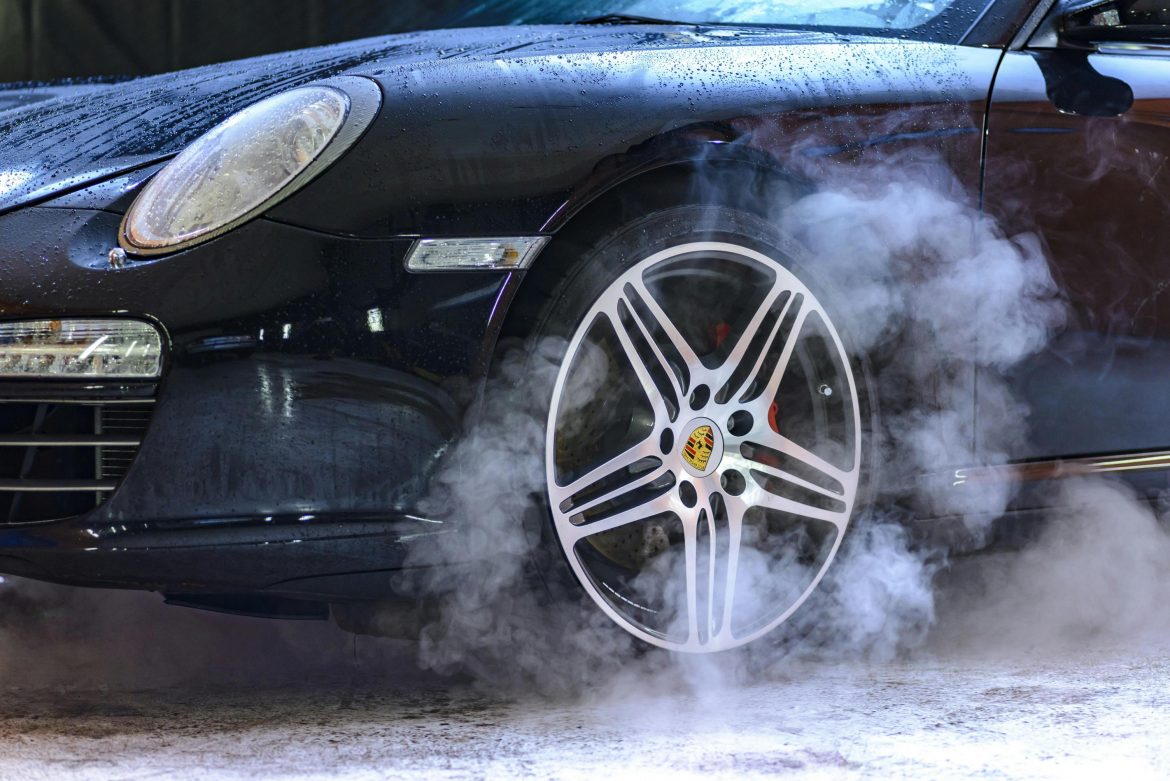When to Replace Brake Pads: Signs, Mileage & Safety Tips

Your car’s brakes are one of its most important safety features. They help you stop safely in traffic, at intersections, or in emergencies. But over time, your brake pads wear down and need to be replaced.
Knowing when to replace brake pads can help you avoid dangerous driving situations and costly repairs. In this guide, we’ll explain how brake pads work, how to recognize the warning signs, how often to check them, and tips to make them last longer.
What Are Brake Pads?
Brake pads are small but powerful parts of your car’s disc brake system. When you press the brake pedal, the brake pads press against a metal disc called the rotor. That pressure creates friction, which slows down your wheels and brings your vehicle to a stop.
Every time you hit the brakes, the pads lose a little material. Over time, they get thinner. Once they wear down too far, they can’t grip the rotor properly—and your stopping power decreases.
How Often Should You Replace Brake Pads?
On average, brake pads should be replaced every 30,000 to 70,000 miles. This wide range depends on a number of factors, like how and where you drive, the type of pads your vehicle uses, and the weight of your car.
General Mileage Guidelines:
- City driving: 25,000–40,000 miles
- Highway driving: 60,000–70,000 miles
- Heavy vehicles or towing: May need replacement sooner
- Performance vehicles: May require more frequent changes
If you’re wondering how long brakes last, this is part of the answer. Brake pads wear out sooner than other brake parts like rotors or calipers, so they’re usually the first to be replaced.
Signs It’s Time to Replace Your Brake Pads
Even if you haven’t reached the mileage limit, your car may show signs that the brake pads are wearing down. Ignoring these signs can lead to longer stopping distances, damage to other parts of your brake system, and even accidents.
Here are the most common warning signs:
- Squealing or Screeching Sounds
If you hear a high-pitched squeal when you brake, your brake pads are likely getting low. Many pads have built-in wear indicators that make noise when it’s time to change them.
- Grinding Noise
A grinding sound usually means the pads are completely worn out and metal is rubbing against metal. This can damage your rotors and lead to expensive repairs.
- Longer Stopping Distance
If it takes longer to stop than usual, your brake pads may not be working as well as they should. This is a serious safety concern and should be checked right away.
- Brake Warning Light
Some cars have a dashboard light that comes on when there’s an issue with the brake system. Check your owner’s manual to confirm what the light means for your vehicle.
- Vibration or Pulsing When Braking
If your steering wheel or brake pedal shakes when you stop, it could mean your brake pads are uneven or your rotors are warped.
- Thin Brake Pads
If you can see your brake pads through your wheels, look at how thick they are. If they’re less than ¼ inch (about 3mm), it’s time to replace them.
What Happens If You Don’t Replace Brake Pads?
Driving with worn-out brake pads is dangerous and can damage your vehicle. Here’s what can happen:
- Reduced stopping power, which increases the risk of an accident
- Rotor damage, which leads to more expensive repairs
- Overheated calipers, which may fail and need replacement
- Brake fluid contamination from excess heat and debris
Replacing your pads on time protects the rest of your brake system and keeps you safe on the road.
Factors That Affect Brake Pad Lifespan
Not all brake pads wear out at the same rate. Here are the main things that can cause them to last longer or wear out faster:
- Driving Habits
- Hard braking wears out pads faster
- Gentle, gradual braking extends their life
- Riding the brakes (resting your foot on the pedal) causes premature wear
- Road Conditions
- Stop-and-go traffic in cities wears pads faster
- Highway driving is easier on brakes due to fewer stops
- Hills and mountains put more pressure on brakes during downhill driving
- Vehicle Type
Larger vehicles like SUVs, trucks, and vans are heavier and place more strain on the brakes. Towing also adds extra wear.
- Brake Pad Material
- Organic pads are quieter but wear quickly
- Semi-metallic pads offer good performance and durability
- Ceramic pads last the longest and make less dust, but they’re more expensive
Types of Brake Pads
Understanding the type of brake pads on your vehicle can also help you estimate how often they need replacing.
Organic Brake Pads:
- Made from materials like rubber, glass, and resin
- Soft, quiet, and budget-friendly
- Wear out faster (around 20,000–40,000 miles)
Semi-Metallic Brake Pads:
- Made from metal shavings and synthetic materials
- Stronger and better for high temperatures
- Medium lifespan (30,000–60,000 miles)
Ceramic Brake Pads:
- Made from ceramic fibers and bonding agents
- Longest-lasting and cleanest option
- Can last 60,000–70,000 miles or more
Check your owner’s manual or ask your mechanic what type your vehicle uses.
When to Check Your Brake Pads
Even if you’re not having any problems, it’s smart to have your brake pads checked every 10,000 to 15,000 miles. Many repair shops will inspect them for free during oil changes or tire rotations.
Quick Ways to Monitor Brake Health:
- Look through your wheels to check pad thickness
- Listen for unusual noises
- Pay attention to how the brake pedal feels
- Watch for changes in how your car stops
Catching brake problems early can save you money and keep your car safe.
Tips to Make Your Brake Pads Last Longer
Want to get the most mileage out of your brake pads? These habits can help extend their life:
- Drive Smoothly
Slow down gradually and avoid slamming the brakes unless it’s an emergency.
- Don’t Ride the Brakes
Resting your foot on the pedal can create constant friction and wear.
- Avoid Heavy Loads
Only carry what you need in your trunk. A lighter car puts less stress on the brakes.
- Use Engine Braking
On long downhill roads, take your foot off the gas and let the engine help slow the car before braking.
- Get Regular Inspections
Have your brakes checked by a mechanic regularly—even if everything feels normal.
Brake Pads vs. Other Brake Parts
Replacing your brake pads doesn’t mean replacing the entire brake system. Other parts have different lifespans:
| Part | Average Lifespan |
| Brake Pads | 30,000–70,000 miles |
| Rotors | 50,000–70,000 miles |
| Calipers | 75,000–100,000 miles |
| Brake Fluid | Replace every 2–3 years |
Regular brake pad replacement helps protect these other components and keeps your full brake system in good shape.
Final Thoughts
Knowing when to replace brake pads is an important part of being a responsible driver. While most pads last between 30,000 and 70,000 miles, it’s crucial to watch for signs like squealing, grinding, or slow stops. Ignoring these warnings can lead to bigger—and more expensive—brake problems down the road.
If you’ve ever asked yourself, how long do brakes last?, remember: brake pads are just one part of the answer. With good driving habits, routine checks, and timely replacements, you can keep your brakes working properly and stay safe behind the wheel.


